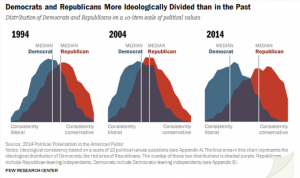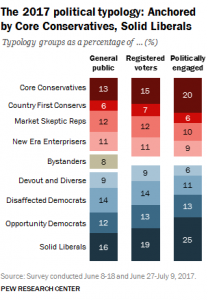Is it time the United States moved to a multi-party system?
Currently there exist two major political parties in the United States of America, namely the Democratic Party and the Republican Party. Historically, various minority parties had been formed but the political system in the U.S. has largely been dominated by these two major parties. But now more than ever before, these two parties are divided in terms of ideological thinking and partisan antipathy is at its deepest and most extensive point. Many Americans believe that these divisive politics are harmful to the well being of the nation and that something should be done about it.
Consequently, an increase in political polarization and feeling of a divided nation has led to the thought of whether or not a multi-party system could work in the United States. My view is that it could work well and that it could potentially solve the problem of massive polarization in American politics.
America is a country with an extremely diverse voting population, not only in terms of racial ethnicity but also in terms of levels of income, education, different religions, etc. That means that having only two parties is not an accurate reflection of what the population thinks and feels and hence that makes the idea of having a representative democracy seem less democratic. Therefore, there should be multiple parties that represent the diverse thinking and views of the diverse population in order to paint a better and truer picture of public opinion.
A Pew Research Center report suggests that there are 8 distinct categories of political ideology (9 including bystanders, i.e. people not engaged in politics). They are basically different levels of Democrats and Republicans, but imagine having 8 different political parties based on these ideologies; it would represent the population and its interests much better in the political system.
The eight ideological groups are as follows –
- Core Conservatives
- Country First Conservatives
- Market Skeptic Republicans
- New Era Enterprisers
- Devout and Diverse
- Disaffected Democrats
- Opportunity Democrats
- Solid Liberals
Political participation might even increase since people will be able to identify more with a party of their liking and one that matches their beliefs instead of just refraining from participating. A multi-party system would also allow people to vote for a party instead of a candidate, which would be a shift from the current practices. It would even allow for coalition politics to take place in a scenario where no single party gets enough votes to win an election. That would mean that people from each party would be willing to set aside their differences and willing to compromise in order to reach an agreement to form a government that is in the best interests of the people that they represent.
The bottom line is this – having multiple parties instead of just two is better since it would better represent the opinion of the diverse public that resides in the United States. It would also be a better alternative to having a divided nation, as it is currently in the eyes of many people. It is better to have divided parties rather than having divided ideologies, since more people would tend to participate with parties that they can identify with, making the whole process more democratic than it was ever before. Having two parties only worked well earlier since people were either liberal or conservative, but now there are many schools of thought and people should have a right to have these represented as well.
Sources –
https://www.huffingtonpost.com/rachel-eckhardt/the-more-the-merrier-woul_b_8387458.html
http://www.people-press.org/2014/06/12/political-polarization-in-the-american-public/
https://www.npr.org/2017/10/24/559774933/2-party-system-americans-might-be-ready-for-8

